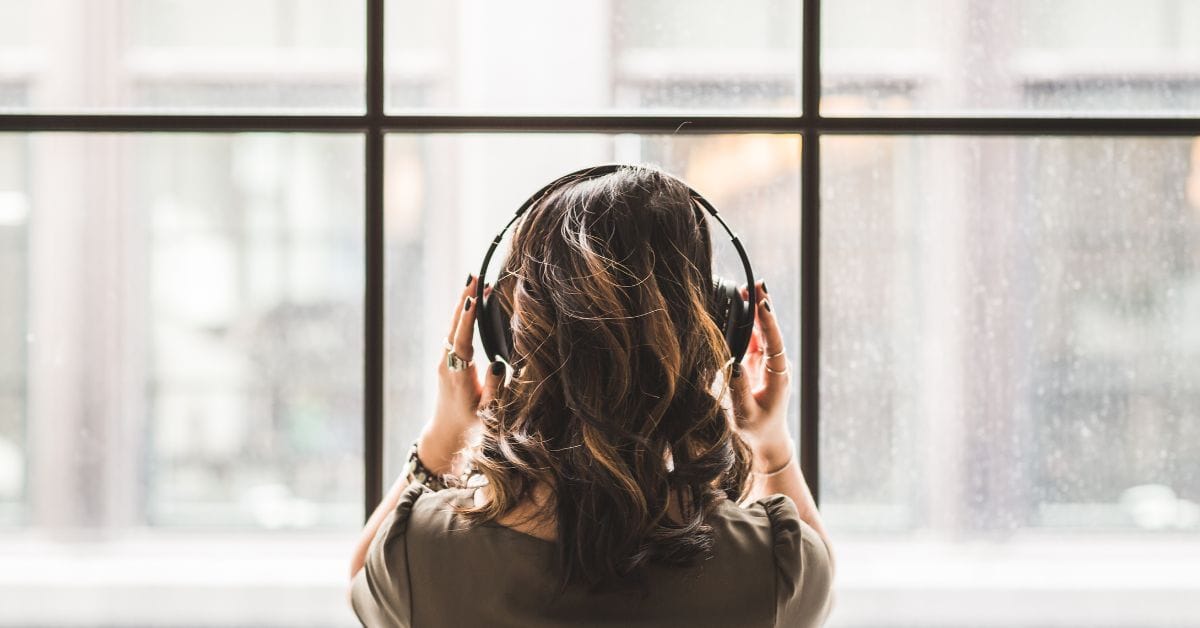Do noise-cancelling headphones cause auditory processing disorder?

How many times have you used headphones or earbuds today? While you were getting ready for work? A podcast on your commute? On video calls for work? An audiobook on a walk? Focus music to get work done? Your favorite playlist at the gym? Facetiming with a friend? Scrolling social media or streaming a show from your sofa?
If you are anything like me, it’s pretty often, right?
Sounding the alarm on noise-canceling headphones
Earlier this year, the BBC published an article, Are noise-cancelling headphones to blame for young people's hearing problems?, reporting audiologists’ concerns that noise-cancelling headphones use could be linked to auditory processing disorder.
Central auditory processing disorder (CAPD) is not a hearing problem; instead, it’s a problem with your brain’s ability to understand sounds, including spoken words. According to the American Speech-Language Hearing Association, people with CAPD may experience difficulty localizing sounds, understanding spoken language in noisy environments, frequently request people repeat themselves, or take longer to respond, among other symptoms.
The BBC article proposed a connection between CAPD and noise-cancelling headphones, which was backed up by anecdotes. But it made sense to me. Based on my understanding of the brain, I immediately formed a hypothesis about how noise-cancelling tech and CAPD could be linked.
Plastic not static
Your brain is capable of change even after it is fully developed in early adulthood. The brain creates new neurons and the connections between neurons adapt. Neuroplasticity is what allows your brain to improve, recover from damage, and adapt to a changing environment. When I worked in neuro rehabilitation, my patients recovered from strokes and brain injuries because brains have neuroplasticity.
If you’ve ever learned a new sport or a new skill that was exhausting as a beginner and then as an expert, you felt you could do it without thinking about it, it’s because your brain can change and improve.
If you’ve ever stopped speaking a language, playing a game, or driving a car and then begin again, only to find that it was more challenging than you remembered, that is also because of neuroplasticity. You stopped using the skill, so your brain adapted and allocated resources elsewhere.
Detect the signal from the noise
Neuroplasticity is the reason I could see the concern of the audiologists in the BBC article.
Let’s consider listening to an audiobook with noise-canceling headphones. You are listening to a performer deliver speech directly to your ear while noise-cancelling technology actively produces inverted sound waves to eliminate the noise outside your headphones. Then your partner walks up behind you and you jump out of your skin. The story isn’t even a thriller!
If you’re listening to headphones or earbuds with noise-cancelling technology, you’re not using your brain’s skills at detecting the signal (the performer’s voice) from noise (the dishwasher, a dog barking outside, a child launching their truck off the stairs, the refrigerator, or your partner walking up behind you).
Based on the anecdotal evidence, a hypothesis might be that if people use noise-cancelling technology for N hours a day (dose) and for Z months (duration), their brains will adapt and decrease their ability to detect the signal from noise.
Use it or lose it.
Wait. What about the evidence?
Within a few days of the BBC article, The New York Times published an article, There’s no evidence that noise-cancelling headphones cause auditory processing disorder, which countered the BBC article.
While I can see a possible link between CAPD and noise-cancelling headphones, I also see that The New York Times is also correct. There is no evidence that noise-cancelling headphones cause CAPD. There is no evidence because there is no research explicitly looking at noise-cancelling headphones and CAPD.
We have imperfect information. In my review of the research, I could not find any explicit studies on the long-term effects of using noise-cancelling headphones extensively on the brain. (If you know of research that I'm not aware of, please send me a message.)
I did find something intriguing. Preliminary research suggests that headphones and earbuds may be the connection to CAPD, rather than specifically noise-cancelling technology.
What’s so special about spatial audio?
Hearing Diagnostics is developing hearing screening technology that makes hearing screenings more accessible. While evaluating their hearing screener, they asked participants in multiple age groups to listen to sounds in headphones that simulated sounds coming from different directions.
The team at Hearing Diagnostics found something surprising within the participants with normal hearing (meaning they were able to detect sounds of different frequencies). 95% of adults over the age of 50 were able to localize sounds without challenges, but only 60% of adults under the age of 30 were able to do the same. This is not at all expected. Generally, when it comes to sensory tasks (hearing, vision, etc.), younger adults perform better than older adults. Previous research and norms support that sensory accuracy declines gradually with age.
When Hearing Diagnostics followed up with participants, they found that younger adults reported struggling to hear in noisy environments and they wore headphones for hours a day, which they had been doing since they were in high school.
Claudia Freigang, CEO and Cofounder of Hearing Diagnostics, believes that noise-cancelling technology alone isn’t to blame. It’s headphone usage.
Headphones don’t provide spatial sound. The sound is delivered directly to your ears. Your brain can’t detect where it’s coming from. Outside of headphones, sound waves interact with things in the environment, which changes the sound. Because your ears are in different locations on your head, they hear the sounds slightly differently. Your brain takes the input from both of your ears and can assign a location. Headphones bypass this process.
Over time the brain adapts to not localizing sound, which could be the reason the young adults Freigang talked to reported having trouble hearing in noisy environments.
So we’re all doomed?
Not only is the finding from Hearing Diagnostics' preliminary research, but Hearing Diagnostics’ study wasn’t designed to answer this specific research question. In response to this finding, they are actively looking to investigate this more systematically, but it’s too early to have any recommendations yet.
Collectively, we still don’t have enough evidence to make recommendations, but we do have enough insights to generate some good research questions and hypotheses.
If you want updates on research on headphone usage, including noise-cancelling technology, and how it impacts our brains, stay tuned! I’ll share information as I learn.
If you are researching how headphone usage or noise-cancelling technology impacts our brains, reach out. I’d love to learn what you are finding.
Take Aways
- There isn’t enough research to indicate whether extensive headphone use by young adults or adults is safe or introduces the risk of auditory processing disorder. We need more research.
- Headphones, with noise-cancelling technology or without, change the signals your brain has to hear and understand sounds. If you want to give your brain practice using more signals for understanding and localizing sounds, go for a walk without headphones. Pay attention to the (city or nature) sounds around you. Try to identify the sounds and their location. Do you notice how the sound of a car changes as it drives by you or how the sound of a dog barking changes as you walk by it?
- If you have concerns about your ability to understand speech or sound, find an audiologist who specializes in auditory processing disorder for an evaluation. Check ASHA ProFind.
References
Central Auditory Processing Disorder. (2025, February 15). https://web.archive.org/web/20250215235950/https:/www.asha.org/practice-portal/clinical-topics/central-auditory-processing-disorder/#collapse_8
Freigang, C. (2025, February 19). Are Headphones Changing the Way Young People Hear the World? Hearing Diagnostics Limited. https://hdiags.co.uk/2025/02/19/are-headphones-changing-the-way-young-people-hear-the-world/
Harm from Noise-Cancelling Headphones? More Questions than Answers. (n.d.). Office for Science and Society. Retrieved June 13, 2025, from https://www.mcgill.ca/oss/article/medical-technology-did-you-know/harm-noise-cancelling-headphones-more-questions-answers
Karpel, H. (2025, February 16). Are noise-cancelling headphones to blame for young people’s hearing problems? [News]. BBC News. https://www.bbc.com/news/articles/cgkjvr7x5x6o
There’s No Evidence That Noise-Cancelling Headphones Cause Auditory Processing Disorder. (2025, February 27). The New York Times. https://www.nytimes.com/wirecutter/reviews/auditory-processing-disorder-headphones/





